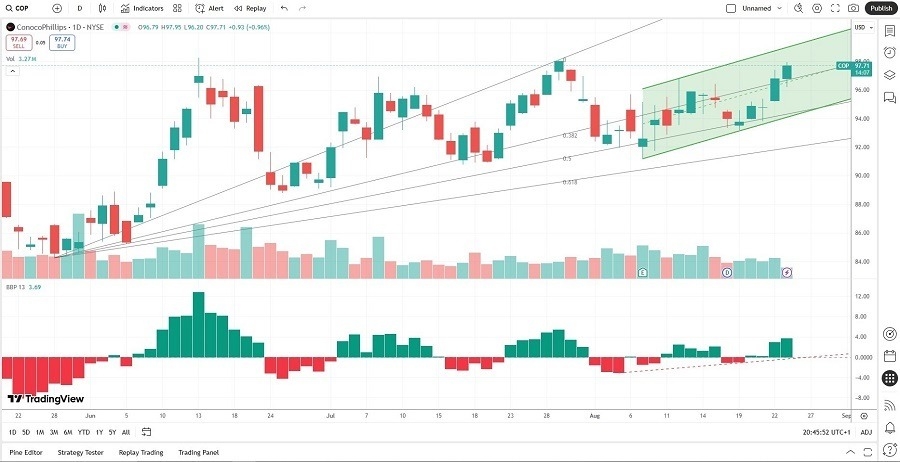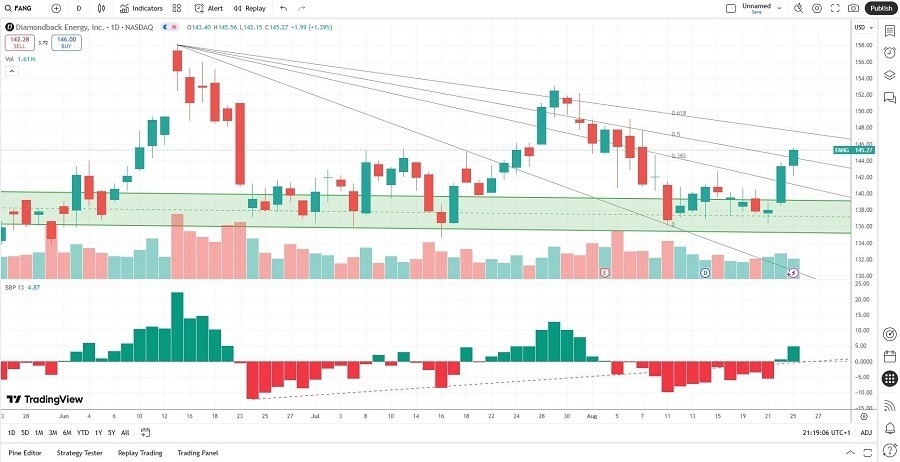What Are Oil Stocks?
Oil stocks refer to publicly listed companies that engage in the oil and gas sector. The oil industry consists of the upstream, midstream, and downstream sectors. The upstream sector consists of the exploration and production of oil and gas. The midstream sector connects the upstream and downstream sectors via pipelines, tanks, terminals, and logistics. The downstream component refines, processes, and distributes finished oil and gas products.
The petrochemical sector is another critical component of oil stocks. Despite popular belief, many oil companies explore alternative energy solutions. They are active in natural gas and carbon capture. They have the capital reserves, but oil stocks must walk a fine line between maximizing existing infrastructure for oil and gas and transitioning to the future.
Why Should You Consider Investing in Oil Stocks?
Leading oil stocks pay a consistent and stable dividend yield. Despite the green energy transition, oil and natural gas are critical to the global economy. The pivot towards oil, natural gas, and nuclear power for the US energy security has opened the door for a renaissance of oil stocks, especially those with an attractive natural gas portfolio.
Here are a few things to consider when evaluating oil stocks:
- The oil sector lacks long-term visibility due to the volatility of oil prices, making a low-cost business model vital
- Focus on oil stocks with a balanced combination of short-cycle and long-cycle investments
- A well-diversified portfolio of oil and natural gas projects across global production hubs with excellent growth potential will ensure ongoing supply to meet surging demand
- Invest in oil companies with healthy dividend yields to compensate your portfolio for the volatility in oil prices
What Are the Downsides of Oil Stocks?
The volatility of oil prices and the global transition to becoming carbon-neutral as soon as possible, which is unlikely before 2050, pose long-term risks beyond 2035. However, the outlook over the next five to ten years remains excellent.
Here is a shortlist of attractive oil stocks:
- ConocoPhillips (COP)
- BP (BP)
- Occidental Petroleum (OXY)
- CNX Resources (CNX)
- Diamondback Energy (FANG)
- Chevron (CVX)
- EQT (EQT)
- Shell (SHEL)
- Exxon Mobil (XOM)
- The Williams Companies (WMB)
- Northern Oil and Gas (NOG)
- Expand Energy (EXE)
ConocoPhillips Fundamental Analysis
ConocoPhillips (COP) is an oil and natural gas company active in 15 countries. The US, Australia, and Norway account for over 70% of its production, with the US at nearly 50%, and operations in 48 states. COP is also a component of the S&P 100 and the S&P 500.
So, why am I bullish on COP after it has rallied since June?
The mix of short-cycle and long-cycle investments, with an inventory at a cost of supply below $40 a barrel, provides ConocoPhillips with a unique competitive advantage to generate ongoing free cash flow even with oil prices at current levels. I like its long-term natural gas and LNG investments, which ensure that COP remains relevant during the green transition. COP projects industry-leading free cash flow generation through 2029 and plans to hike its dividend among the top 25% of companies in the S&P 500.
ConocoPhillips Fundamental Analysis Snapshot
Metric | Value | Verdict |
P/E Ratio | 13.09 | Bullish |
P/B Ratio | 1.84 | Bullish |
PEG Ratio | 8.24 | Bearish |
Current Ratio | 1.27 | Bearish |
Return on Assets | 7.47% | Bullish |
Return on Equity | 13.96% | Bullish |
Profit Margin | 15.84% | Bullish |
ROIC-WACC Ratio | Positive | Bullish |
Dividend Yield | 3.29% | Bullish |
The price-to-earnings (P/E) ratio of 13.09 makes COP an inexpensive stock. By comparison, the P/E ratio for the S&P 500 is 29.84.
The average analyst price target for COP is 116.58. It suggests excellent upside potential with manageable downside risks.
ConocoPhillips Technical Analysis

- The COP D1 chart shows price action breaking out above its ascending 38.2% Fibonacci Retracement Fan
- It also shows ConocoPhillips inside a bullish price channel
- The Bull Bear Power Indicator is bullish with an ascending trendline
My Call
I am taking a long position in COP between 96.78 and 98.25. I like the cost of supply below $40 a barrel, the valuations are cheap, and the price-to-book ratio suggests excellent value. COP will generate free cash flow at current oil prices, but I expect higher average prices over the next five years. The dividend plan is rock solid and compensates for short-term volatility. I will buy the dip in COP, which ranks among my top oil stock picks.
Diamondback Energy Fundamental Analysis
Diamondback Energy (FANG) is an oil and natural gas company. It has a history of strategic acquisitions, where its blockbuster purchase of Endeavor Energy for $26 billion in cash and stock stands out. Its portfolio is roughly 50% in oil, and 50% in natural gas and natural gas liquids. Diamondback Energy is also a member of the NASDAQ 100 and the S&P 500.
So, why am I bullish on Diamondback Energy after its breakout?
I like the strategic acquisition of oil and natural gas reserves and infrastructure of Diamondback Energy. The valuations rank among the lowest among oil stocks, and FANG has increased its 2025 production outlook. Several analysts have raised their price target above $220 per share, and Diamondback Energy remains well-positioned to benefit from the current US energy plan.
Diamondback Energy Fundamental Analysis Snapshot
Metric | Value | Verdict |
P/E Ratio | 10.53 | Bullish |
P/B Ratio | 1.07 | Bullish |
PEG Ratio | Unavailable | Bearish |
Current Ratio | 0.55 | Bearish |
Return on Assets | 5.31% | Bullish |
Return on Equity | 9.82% | Bullish |
Profit Margin | 27.11% | Bullish |
ROIC-WACC Ratio | Positive | Bullish |
Dividend Yield | 2.90% | Bullish |
The price-to-earnings (P/E) ratio of 10.53 makes FANG an inexpensive stock. By comparison, the P/E ratio for the S&P 500 is 29.84.
The average analyst price target for Diamondback Energy is 182.60. It suggests double-digit upside potential from current levels.
Diamondback Energy Technical Analysis

- The FANG D1 chart shows price action breaking out above its descending 38.2% and 50.0% Fibonacci Retracement Fan
- It also shows Diamondback Energy completing a breakout above its horizontal support zone
- The Bull Bear Power Indicator turned bullish and has been improving for over two weeks
My Call
I am taking a long position in Diamondback Energy between 142.15 and 147.70. I appreciate the cheap valuation and like the price-to-book ratio, which suggests the current share price trades close to shareholder equity. FANG has an excellent acquisition strategy and makes an appealing long-term portfolio addition at current prices.
Ready to trade our analysis of the best oil stocks to buy now? Here is our list of the best brokers for trading worth checking out.
